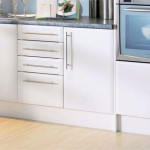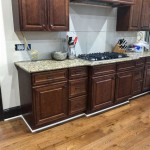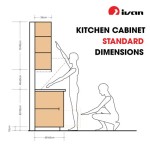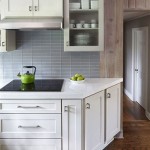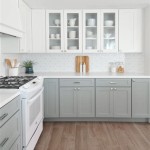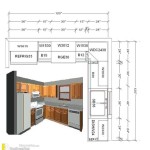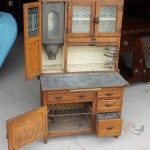Kitchen Cabinet Creator Script For 3ds Max 2024
3ds Max is a powerful 3D modeling and animation software widely used in architectural visualization, product design, and game development. Creating detailed and accurate kitchen cabinet models within 3ds Max can be time-consuming and repetitive, especially when dealing with multiple cabinets and variations. A dedicated kitchen cabinet creator script can significantly streamline this process, automating many of the tedious tasks and allowing designers to focus on the more creative aspects of the project. This article details the functionalities, benefits, and considerations when developing or utilizing a kitchen cabinet creator script specifically tailored for 3ds Max 2024.
The core purpose of a kitchen cabinet creator script is to provide a user-friendly interface within 3ds Max where users can define the parameters of their desired cabinet and automatically generate the 3D model. This involves defining dimensions, material properties, hardware configurations, and other relevant attributes. The script should be flexible enough to handle a wide range of cabinet styles, from simple base cabinets to complex upper cabinets with integrated appliances. The script also provides modularity, allowing changes and updates as needed without recreating the entire model from scratch.
Key Benefits of a Kitchen Cabinet Creator Script
The primary advantage of using a kitchen cabinet creator script is the significant reduction in modeling time. Manually creating each cabinet component—the box, doors, drawers, shelves—and assembling them is a laborious process. A well-designed script automates this, allowing users to input specifications and generate the complete cabinet model in a fraction of the time. This efficiency translates to faster project turnaround times and increased productivity.
Another key benefit is the improved accuracy and consistency. By defining parameters through a script, users ensure that all cabinets within a project adhere to the same dimensions and specifications. This reduces errors and ensures a cohesive aesthetic throughout the kitchen design. Furthermore, scripts can incorporate predefined manufacturing tolerances, ensuring that the virtual model accurately reflects the real-world cabinet construction.
The customizability offered by a script is exceptionally valuable. Rather than being limited to a set of pre-built models, users can create cabinets tailored to specific client needs and design preferences. Users can specify cabinet dimensions, materials, door styles, hardware options, and even internal configurations. This level of customization enables the creation of unique and personalized kitchen designs that meet exact requirements.
Essential Functionalities of the Script
At its core, the script must handle basic cabinet body creation. This includes parameters for width, height, depth, and the thickness of the cabinet panels. The script should allow users to specify different materials for the exterior and interior of the cabinet, as well as options for edge banding and other finishing details.
The script needs to have a robust system for managing doors and drawers. This involves defining the number of doors and drawers, their dimensions, and their positions relative to the cabinet body. Users should be able to choose from various door styles, such as flat panel, raised panel, or shaker style, and to specify the hardware to be included, such as handles, knobs, and hinges. Automatic spacing and alignment functions are important for generating visually appealing and realistic results.
The script also needs to facilitate creating internal components such as shelves and partitions. A crucial aspect is the ability to define the number and spacing of shelves, as well as their material and thickness. The script should also allow for the creation of partitions to divide the cabinet interior into separate compartments. These internal components contribute to the overall functionality and organization of the kitchen design.
Finally, the script should ideally incorporate features for generating reports and bill-of-materials (BOM). This functionality allows users to generate a list of all the components used in the cabinet model, including their dimensions, materials, and quantities. This information is essential for manufacturing and cost estimation purposes. The script should also be able to output data in a format that can be easily imported into other software applications, such as CAM programs or ERP systems.
Considerations for Development and Implementation in 3ds Max 2024
Developing a kitchen cabinet creator script for 3ds Max 2024 requires a solid understanding of the MaxScript language, 3ds Max's API, and the principles of kitchen cabinet design. It is important to design a user interface that is intuitive and easy to use, allowing users to quickly define the parameters of their cabinets. The script should be well-documented and include clear instructions on how to use it. This will help users to get up and running quickly and to avoid common errors.
Performance is a key consideration, especially when dealing with complex cabinet models or large kitchen designs. The script should be optimized to minimize processing time and memory usage. This can be achieved by using efficient algorithms, minimizing the number of polygons in the model, and using instancing to reduce memory consumption. It's very useful when the script can automatically generate low-poly versions of the design to speed up viewport performance during the design phase.
Compatibility is vital, particularly when targeting a specific version of 3ds Max, such as 2024. Developers must ensure that the script is compatible with the target version and that it does not rely on deprecated features. Thorough testing is essential to identify and resolve any compatibility issues before releasing the script. Furthermore, the script should be designed to be easily updated and maintained, so that is can continue to function correctly as 3ds Max evolves.
A crucial aspect of implementing the script is integrating it into the user's workflow. This means providing clear instructions on how to install and use the script, as well as offering support to users who encounter problems. The script should be designed to be easily customized and extended, allowing users to adapt it to their specific needs and to add new features. This flexibility is essential for ensuring that the script remains a valuable tool for kitchen cabinet design.
The script can potentially use the 3ds Max modifier stack to allow for non-destructive editing. The script can create a base cabinet object and then add modifiers to it that define the various parameters, such as the dimensions, materials, and hardware. This allows the user to change the parameters of the cabinet at any time without having to rebuild the entire model. This approach greatly increases flexibility and reduces the risk of errors.
Another important consideration is material handling and management. The script should allow users to easily assign materials to the various components of the cabinet, such as the doors, drawers, and shelves. It should also support the use of material libraries, allowing users to easily access a wide range of pre-defined materials. The script should ideally integrate with 3ds Max's material editor, allowing users to create and edit materials directly within the script's interface.
The script may also benefit from incorporating parametric modeling techniques. Parametric modeling allows users to define relationships between different parameters of the cabinet. For example, the width of a drawer could be defined as a function of the width of the cabinet. This ensures that the drawer will always fit correctly, even if the width of the cabinet is changed. Parametric modeling can greatly simplify the design process and reduce the risk of errors.
The script can incorporate tools for handling common kitchen appliance models. The script should allow users to easily insert appliances such as refrigerators, ovens, and dishwashers into the kitchen design. It should also provide tools for positioning and aligning these appliances correctly. This can save users a significant amount of time and effort, as they would otherwise have to manually model or import these appliances.
Finally, a useful feature would be to include advanced collision detection. The script could incorporate collision detection algorithms to ensure that the cabinet model does not intersect with any other objects in the scene. This can help to prevent errors and ensure that the kitchen design is physically accurate. Collision detection could also be used to optimize the layout of the kitchen, by identifying potential conflicts and suggesting alternative arrangements.

Kitchen Cabinet Creator Free Script For 3dsmax Create In 1 Clikck

Kitchen Cabinet Generator V4 0 Updated

Kitchen Cabinet Script From Panubis3d

Kitchen Cabinet Creator 1 02 Shift3d

Kitchen Cabinet Generator V3 0

Kitchen Cabinate Creator Script For 3ds Max 2024

Kitchen Cabinet Generator V4 0

Kitchen Cabinet Generator 3dsmax

Kitchen Cabinate Creator Script For 3ds Max 2024

Scripts Para 3ds Max Kitchen Cabinet Creator Ejezeta
Related Posts

